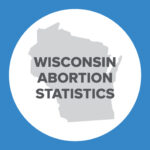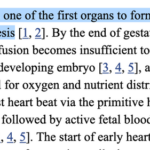Induced Abortion with Misoprostol Alone

This is Issue 9 of the On Science Series. The most current version of this paper can be found at Induced Abortion with Misoprostol Alone, On Science 13.
As abortion limits have been implemented in many states in the wake of the Supreme Court’s Dobbs decision, some perplexing recommendations have been advanced by abortion advocates and their media allies. Due to the Food and Drug Administration’s negligent removal of mifepristone’s Risk Evaluation and Mitigation Strategy (REMS) in-person prescribing safeguards, permitting on-line ordering and mail-order distribution, chemical abortions utilizing mifepristone and misoprostol have been widely promoted in states where abortion is restricted. Chemical abortion is not as safe as the abortion industry claims, with meta-analyses and international records linkage studies demonstrating failures requiring surgery in 3.4 to 7.9 percent of women who attempt chemical abortion in the first trimester,[1] rising to 39% if inadvertently used in the second trimester.[2] When failures occur, women often present emergently to hospitals for urgent treatment of retained pregnancy tissue, hemorrhage and infection.
Nonetheless, some media sources now recommend simplifying the abortion pill regimen to only one of its components – misoprostol – because it may be more readily obtained. The influential Atlantic magazine recently promoted this “one drug regimen” as a viable alternative to the standard combination regimen. Yet, evidence from around the globe demonstrates that misoprostol alone is a poor abortifacient and very likely to cause injury to women. These recommendations by abortion advocates in the media demonstrate conclusively that their goal is not the safety and well-being of women, but merely the death of as many unborn humans as possible through expansion of abortion by any means.
The World Health Organization (WHO), motivated by population control ideology, has long been a promoter of chemical abortions in countries where unsafe abortions often occur through nonsterile uterine instrumentation and other dangerous methods. The WHO also promotes misoprostol alone, despite its much lower record of safety, under the assumption that women will always seek abortion when facing unintended pregnancy and should be directed toward “safer” methods.[3]
A 2007 study used mathematical modeling, predicting that many lives would be saved with misoprostol use,[4] but in fact the WHO continues to document real-world data that shows increasing numbers of women injured and dying from abortion, even though they have been heavily promoting these chemical abortion methods for years. [5]
Many studies have documented the danger associated with misoprostol when used alone as an abortifacient. In 2013, the WHO published recommendations for misoprostol use in obstetrics and gynecology. They acknowledged that “randomized controlled trials have consistently shown that combined regimens (mifepristone and misoprostol) are more effective than single medication (misoprostol alone) regimens” and stated that there was “limited evidence” to support its use beyond nine weeks gestation.[6] Nevertheless, WHO guidelines continue to advocate for this dangerous method in countries where emergency health care may be inaccessible, where blood banking systems are suboptimal and blood transfusion may not be readily available, and where surgical treatment following failed misoprostol abortions may not be easily found.
As an example of how poorly misoprostol alone functions to cause abortion, a 2010 study comparing standard mifepristone/misoprostol with misoprostol alone documented that using misoprostol only to induce an abortion led to a 23.8% failure rate requiring surgery. The embryo/fetus continued to survive in 16.6% of the pregnancies, and misoprostol is known to produce birth defects such as Moebius Sequence, associated with craniofacial and limb abnormalities, leaving these children at risk if the pregnancy continued to birth.[7] In contrast, there were 3.5% failures and 1.5% continuing pregnancies in the mifepristone/misoprostol group.[8] Similarly, a 2013 study demonstrated a failure rate of 38.8% when misoprostol alone was used vaginally and 29.8% when used sublingually (under the tongue).[9] Finally, a worldwide systematic review of more than 12,000 misoprostol abortions, performed by abortion advocacy researchers, found 22% (nearly one in four) required surgical completion because misoprostol failed to completely empty the uterus of the remains of the child.[10] Unfortunately, there was no uniformity of dosing or route of administration in these misoprostol-only studies, leading to difficulty in comparisons or determination of the most effective way to provide misoprostol.
Nonetheless, the review demonstrated conclusively that misoprostol alone failed far more frequently than mifepristone and misoprostol regardless of the dose or administration used.
A 2007 study comparing different methods of misoprostol administration documented that sublingual administration, although more effective, was associated with more side effects, such as pain, fever, nausea, vomiting, and diarrhea. Vaginal administration was next in efficacy (although other sources have documented more infections with this route[11]), and oral administration was considered to be the least effective.[12] Notably, none of the media sources promoting misoprostol abortion seem willing to give or direct women to information regarding recommended doses or routes of administration, apparently leaving the woman in crisis to figure it out on her own.
Promotion of misoprostol alone also seems to have been prioritized in states with restrictive abortion laws bordering countries where misoprostol is more readily available. I have personally verified that crossing the Texas-Mexican border leads to many opportunities to purchase misoprostol in border-town pharmacies, as it is readily available, inexpensive, and available without a prescription. However, women who follow these vague recommendations may have no idea of the quality of the unregulated medications they have obtained. One study on the feasibility of obtaining abortion drugs from international distributors over the internet found in some cases misoprostol tablets contained only 17% of the advertised amount of medication.[13] Using one-sixth the recommended amount is unlikely to produce contractions sufficient to evacuate the child and all pregnancy tissue from the woman’s uterus. Additionally, women who live in rural areas may not have immediate access to emergency care if the misoprostol fails. How have we fallen so far from “safe, legal and rare” to “illegal, necessary for every unintended pregnancy, and we really don’t care if it is safe as long as it kills the unborn”?
Ingrid Skop, M.D., F.A.C.O.G. is Senior Fellow and Director of Medical Affairs at Charlotte Lozier Institute.
[1]Raymond EG, et al. First trimester medical abortion with mifepristone 200 mg and misoprostol: a systematic review. Contraception 2013;87(1):26-37.doi: 10.1016/j.contraception.2012.06.011; Chen MJ, Creinin MD. Mifepristone with buccal misoprostol for medical abortion: A systematic review. Obstet Gynecol 2015;126:12-21. doi: 10.1097/AOG.0000000000000897; Niinimaki, et al. Immediate complications of medical compared with surgical termination of pregnancy. Obstet Gynecol 2009;114(4):795-804. doi:10.1097/AOG.0b013e3181b5ccf9.
[2] Mentula MJ, et al. Immediate adverse events after second trimester termination of pregnancy. Hum Reprod 2011;26(4):927-932. doi:10.1093/humrep/der016.
[3] WHO Fact Sheet: Preventing Unsafe Abortion. (2003, revised 2017). Singh S, et al. Abortion Worldwide 2017: Uneven Progress and Unequal Access. New York: Guttmacher Institute, 2018.
[4] Harper CC, et al. Reducing maternal mortality due to elective abortion: Potential impact of misoprostol in low resource settings. IJOG. 2007;98:66-69. doi:10.1016/j.ijgo.2007.03.009.
[5] Unsafe abortion: Global and regional estimates of the incidence of unsafe abortion and associated
mortality in 2003” WHO 5th edition; Sedgh G, Singh S, et al. Induced abortion: incidence and trends worldwide from 1995 to 2008. Lancet. 2012;379:625-632. doi:10.1016/S0140‐6736(11)61786‐8.
[6] Tang J, et al. WHO recommendations for misoprostol use for obstetric and gynecologic indications. Int J Gynecol Obstet. 2013;121:186-189. doi:10.1016/j.ijgo.2012.12.009.
[7] Vauzelle C, et al. Birth defects after exposure to misoprostol in the first trimester of pregnancy: prospective follow-up study. Reprod Toxicol. 2012;36:98-103. doi:10.1016/j.reprotox.2012.11.009.
[8] Ngoc NT, et al. Comparing two early medical abortion regimens: mifepristone+misoprostol vs. misoprostol alone. Contraception. 2010. 2011;83(5):410-7. Doi: 10.1016/j.contraception.
[9] Tanha FD, et al. Sublingual vs vaginal misoprostol for second trimester termination: A RCT. Arch Gynecol Obstet. 2013;287(1):65-69. doi:10.1007/s00404-012-2508-y.
[10] Raymond EG, Harrison MS, Weaver MA. Efficacy of misoprostol alone for first trimester medical abortion: a systematic review. Obstet Gynecol 2019;133:137-147. doi:10.1097/AOG.0000000000003017.
[11] Fjerstad M, et al. Severity of infection following the introduction of new infection control measures for medical abortion. Contraception. 2011;83:330-335. doi:10.1016/j.contraception.2010.08.022.
[12] Faundes A, et al. Misoprostol for the termination of pregnancy up to 12 completed weeks of pregnancy. IJOG. 2007;99:S172-S177. doi: 10.1016/j.ijgo.2007.09.006.
[13] Murtaugh C, et al. Exploring the feasibility of obtaining mifepristone and misoprostol from the internet. Contraception 2018;97(4):287-291. doi: 10.1016/j.contraception.2017.09.016.

























